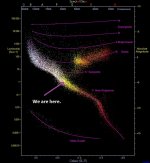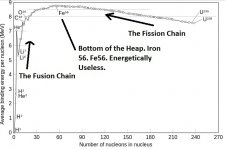Our earth is formed from and out of star dust which comes from a star exploding a long time ago.
If that is that case, then that star whichever it is must be still around in the form of either
a black hole of a white dwarf. But a star big enough to create our solar system, then most
likely it probably ended up being a black hole.
One possible explanation is cosmic inflation. If whichever star it was that exploded a long
time ago, through cosmic inflation, probably be millions of light year away from our solar system.
Our earth is about 4 billion years old. The universe is about 15 billion years old and inflation happens at
very early in the beginning of the universe. Which means that the star that created our solar system
must have explode very nearly early on before inflation and the space between the remnant (that created earth),
expand accordingly therefore it probably be very far away.
But if the star exploded much later on, then it must still be around close by.
If that is that case, then that star whichever it is must be still around in the form of either
a black hole of a white dwarf. But a star big enough to create our solar system, then most
likely it probably ended up being a black hole.
One possible explanation is cosmic inflation. If whichever star it was that exploded a long
time ago, through cosmic inflation, probably be millions of light year away from our solar system.
Our earth is about 4 billion years old. The universe is about 15 billion years old and inflation happens at
very early in the beginning of the universe. Which means that the star that created our solar system
must have explode very nearly early on before inflation and the space between the remnant (that created earth),
expand accordingly therefore it probably be very far away.
But if the star exploded much later on, then it must still be around close by.
I would not think that the "star dust" from which our solar system formed came from just one single dying star.
Our Sun is thought to be a third-generation star and our entire solar system is made of the recycled star stuff of previous star generations.
And cosmic inflation does not occur when objects are gravitationally bound together.
Our Sun is thought to be a third-generation star and our entire solar system is made of the recycled star stuff of previous star generations.
And cosmic inflation does not occur when objects are gravitationally bound together.
Last edited:
Our earth and neighboring planets were formed by our sun when it was forming, pushing out the star dust surrounding it to move around and start to clump together.Our earth is formed from and out of star dust which comes from a star exploding a long time ago.
Star exploding, a.k.a "supernova" doesn't leave behind a black hole or a white dwarf. It leaves nothing in its place. Black hole and white dwarf are formed differently which you can find many links on google search.star exploding a long time ago.
If that is that case, then that star whichever it is must be still around in the form of either
a black hole of a white dwarf.
For a star of between 5 and 12 times the mass of our sun, a neutron star is left in the centre of the supernova remnant. If the neutron star is rotating, it may become a pulsar.
If the star is massive enough a black hole will be formed.
Or, so say NASA!
https://heasarc.gsfc.nasa.gov/docs/objects/snrs/snrstext.html
If the star is massive enough a black hole will be formed.
Or, so say NASA!
https://heasarc.gsfc.nasa.gov/docs/objects/snrs/snrstext.html
Astronomy, than a certain limit is fiction.
There are only theoretical scientists now to create a fake science religion.
Regards.
There are only theoretical scientists now to create a fake science religion.
Regards.
I can't answer the OP but did read this the other day and thought it was cool:
So to have a Be part a star needs to explode and the material needs to get zapped by cosmic rays.
Both stable and unstable isotopes of beryllium are created in stars, but the radioisotopes do not last long. It is believed that most of the stable beryllium in the universe was originally created in the interstellar medium when cosmic rays induced fission in heavier elements found in interstellar gas and dust.
So to have a Be part a star needs to explode and the material needs to get zapped by cosmic rays.
Cosmic rays are still a new thing to science though discovered many decades ago.
We only know that they exist. Passes through anything. Rest of science on cosmic rays is fiction.
We only know that they exist. Passes through anything. Rest of science on cosmic rays is fiction.
I dunno. I heard it in a video about the Webb telescope (which is made out of Be).Cosmic rays are still a new thing to science though discovered many decades ago.
We only know that they exist. Passes through anything. Rest of science on cosmic rays is fiction.
https://en.wikipedia.org/wiki/Cosmic_ray_spallation
1970's.
I have a feeling the James Webb Space Telescope will answer some of this question.
It is, after all, designed to examine the early nature of the Cosmos. Mostly Electrons, Hydrogen and perhaps Protons, being the only early stable things.
Seems to me that Early Stars were extremely huge, short-lived and exploded into much debris and dust, and the remainder collapsing into Black Holes.
Then it all repeats itself a few times.
It is Energy that drives this process on. We should consider Fusion and Fission, which culminates in the Mass Defect of the Periodic Table of Elements.
Also, the Hertzsprung-Russell diagram gave clues to the existence Nuclear Energy as early as 1911-13.
It is probably a waste of time to speculate on the exact evolution of our Sun in the past:
https://en.wikipedia.org/wiki/Sun
And Scientists can only speculate on the Future, which seems to leave us feeling alone in our Local Group or Virgo Cluster of Galaxies, which has coalesced into a lonely Giant Galaxy:
https://en.wikipedia.org/wiki/Timeline_of_the_far_future
But it is interesting that the Sun is 74% Hydrogen, 25%Helium and a mere 1% of other stuff. Not the ratio in the Planets at all. We tend to Iron 56.
It is, after all, designed to examine the early nature of the Cosmos. Mostly Electrons, Hydrogen and perhaps Protons, being the only early stable things.
Seems to me that Early Stars were extremely huge, short-lived and exploded into much debris and dust, and the remainder collapsing into Black Holes.
Then it all repeats itself a few times.
It is Energy that drives this process on. We should consider Fusion and Fission, which culminates in the Mass Defect of the Periodic Table of Elements.
Also, the Hertzsprung-Russell diagram gave clues to the existence Nuclear Energy as early as 1911-13.
It is probably a waste of time to speculate on the exact evolution of our Sun in the past:
https://en.wikipedia.org/wiki/Sun
And Scientists can only speculate on the Future, which seems to leave us feeling alone in our Local Group or Virgo Cluster of Galaxies, which has coalesced into a lonely Giant Galaxy:
https://en.wikipedia.org/wiki/Timeline_of_the_far_future
But it is interesting that the Sun is 74% Hydrogen, 25%Helium and a mere 1% of other stuff. Not the ratio in the Planets at all. We tend to Iron 56.
Attachments
But it is interesting that the Sun is 74% Hydrogen, 25%Helium and a mere 1% of other stuff. Not the ratio in the Planets at all. We tend to Iron 56.
I read that the Sun and Earth share the same refractory elemental abundances, and that, to first order, the Earth is a devolatilised piece of the Sun left over from the Sun’s formation.
The ∼ 1.5% of the mass of the Sun that is not H and not He, consists of oxygen (43.0%), carbon (17.3%), iron (9.7%), neon (8.2%), silicon (5.7%),
magnesium (5.1%), nitrogen (5%), sulphur (2.9%).
Likely due to lighter elements vs heavier elements being pulled or pushed during the formation of our solar system.But it is interesting that the Sun is 74% Hydrogen, 25%Helium and a mere 1% of other stuff. Not the ratio in the Planets at all. We tend to Iron 56.
Yes. The reason the Sun has an abundance of H and He is because once accretion runs away with itself, the core becomes very massive, gravity very strong and it is then able to accrete light elements. Small planets with weak gravity struggle to hold onto light elements like H and He. So, the earth’s makeup and the suns are actually linked very closely since we both formed from the same cloud of gas from a previous super nova. You also see this with a planet like Jupiter - the core at the centre is about 15x the mass of the earth, and this enabled it to draw in lighter elements from the surrounding cloud of matter.
BTW, the density at the centre of the Sun is about 150g/cm^3 or 12x that of lead.
BTW, the density at the centre of the Sun is about 150g/cm^3 or 12x that of lead.
Where does the gaseous material that forms our sun and solar system come from? It has to come from something.
It has to come from something.
It is postulated that, in the beginning, energy resided in the fabric of spacetime itself!
During an initial period of exponential growth which occurred before the Big Bang, this energy transformed into matter, antimatter, and radiation - creating the universe we see today.
Scientists thinks our solar system resides in the middle of a giant void bubble spanning hundreds of light years..
https://www.sciencealert.com/the-so...ow-that-void-triggered-the-formation-of-starshttps://www.eurekalert.org/news-releases/939516https://www.researchgate.net/public...un_is_driven_by_expansion_of_the_Local_Bubblehttps://arxiv.org/pdf/2201.05124.pdfhttps://web.archive.org/web/*/https://arxiv.org/pdf/2201.05124.pdf

https://www.sciencealert.com/the-so...ow-that-void-triggered-the-formation-of-starshttps://www.eurekalert.org/news-releases/939516https://www.researchgate.net/public...un_is_driven_by_expansion_of_the_Local_Bubblehttps://arxiv.org/pdf/2201.05124.pdfhttps://web.archive.org/web/*/https://arxiv.org/pdf/2201.05124.pdf
Last edited:
Sounds like you are describing what happens after eating beans and broccoli.During an initial period of exponential growth which occurred before the Big Bang, this energy transformed into matter, antimatter, and radiation - creating the universe we see today.
I would not think that the "star dust" from which our solar system formed came from just one single dying star.
that is what i was thinking too.
If you look at the star forming reasons they are huge with old and new stars, and maybe black holes and neutron stars (a good excuse for a pretty picture)

dave
Did you mean star forming regions? And yes, they are huge in our perspective.If you look at the star forming reasons they are huge with old and new stars
- Home
- Member Areas
- The Lounge
- Where is the star that created earth and our solar system?


